Customer stories
Dragon Steel Corporation – Wiggins Type Dry Seal Gasholder for Phase 2 Coke Ovens Plant, Taiwan
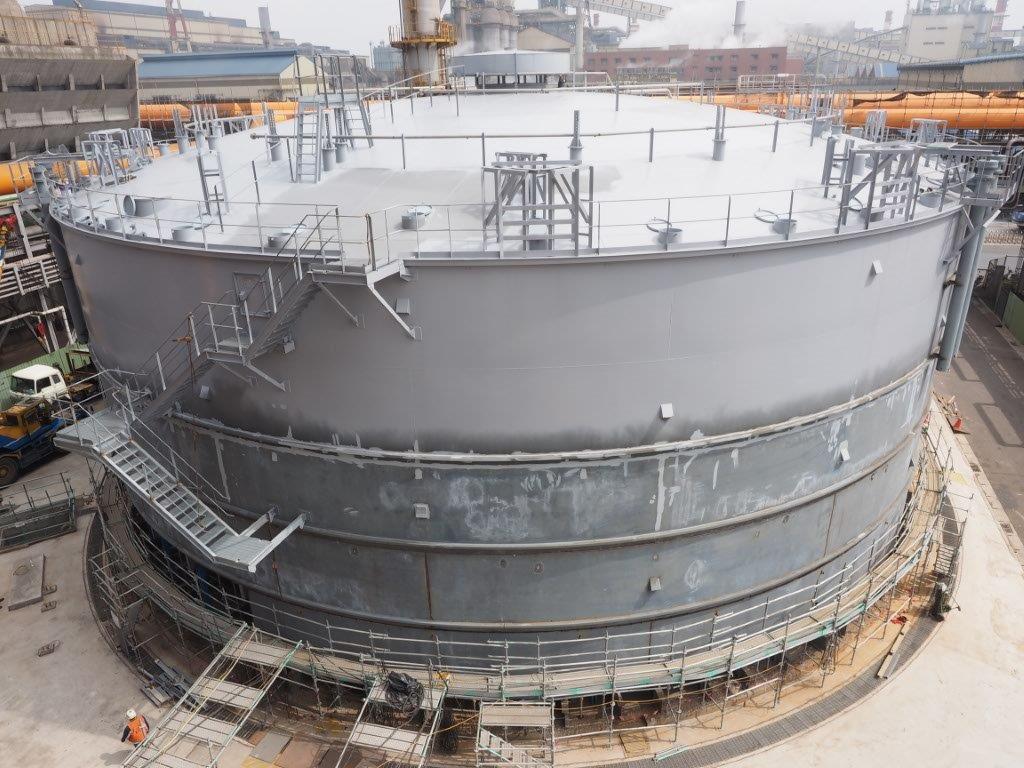
a) Challenge – The contract was won following the success of the first phase installation of a 30,000m³ Wiggins Dry Seal Gasholder by Clayton Walker Gasholder for Dragon Steel Corporation in Taichung, Taiwan.
As with the phase one gasholder, CWG provided design expertise as well as a technical advisory service to oversee construction. A fabrication inspection service was undertaken to oversee shop manufactured parts and assemblies prior to dispatch to the site.
CWG supplied strategic components for the gasholder including the seal and a full electrical and instrumentation package with a PLC with Scada touch screen interface located in the local control room adjacent to the gasholder.
Our main goal with the PLC was to make it “plug and play”, capable of receiving performance data from the gasholder’s field instruments and relaying this information to the plant’s main control room.
b) Deadline – Construction of the gasholder is planned to be complete and commissioned by the end of 2014, within 24 months of contract signature
c) Safety – CWG have representation on site working with the client to ensure safe standards of work during construction are
d) Result – The factory acceptance test of the instrumentation package has been completed and will be installed and commissioned along with the gasholder itself later in 2014.
e) Benefits –
Improved energy sufficiency for client
To provide a package whereby all field instruments can be processed and signals directed on to the plant’s main control room via a central hub
Scada PLC designed for ease of use and understanding
All operating conditions logged and stored for future reference
TATA Steel Limited – Gas Recovery projects for Blast Furnace Plants, India
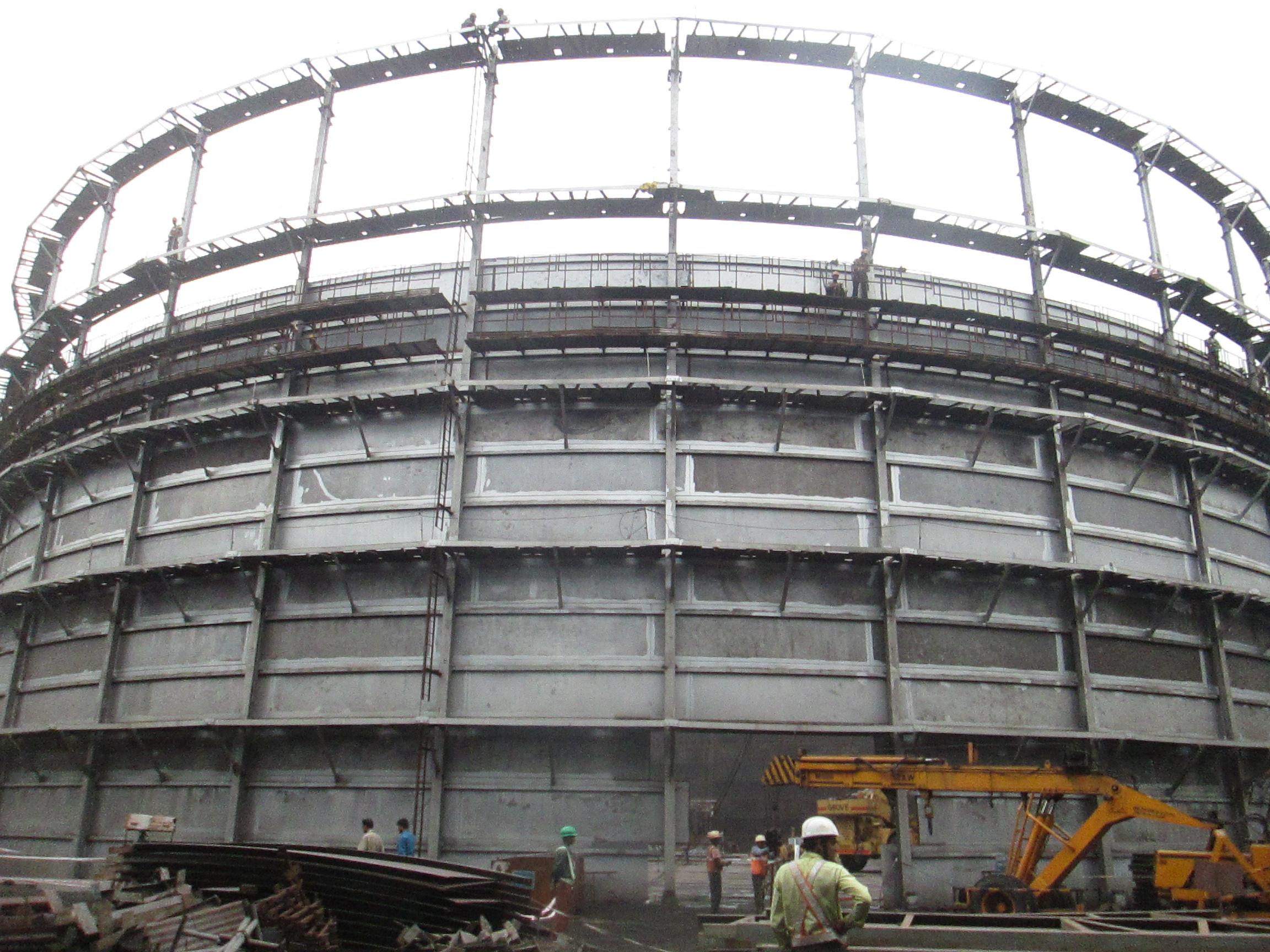

a) Challenge – To design and build two of the largest ever Wiggins Dry Type – Single Seal Gasholders by Clayton Walker Gasholders.
Both 150,000m³ Blast Furnace gasholders are being constructed for TATA Steel Limited with the main goal of benefitting TATA in their efforts to establish energy self-sufficiency and to cater for increased blast furnace gas generation.
Both gasholders are of thin shell design with plates of equal thickness over the full height of the shell with an external framing to provide structural strength against applied forces.
The first of the two gasholders is being built at TATA’s existing steel plant in Jamshedpur – allowing for an increase in iron and coke making capacity of three million tonnes per annum.
The second of the two gasholders is being built at TATA’s new integrated steel plant at Kalinganagar, where TATA plan to set up a steelmaking capacity of 6.2 million tonnes per annum. The gasholder will function as a storage facility and pressure regulator for the blast furnace gas distribution network.
b) Deadline – due for completion in late 2014
c) Safety – Working with our Indian partners Modern India Construction Company (MICCO), each gasholder will be constructed from the ground up in a safe, efficient and timely manner.
d) Results – please see photos
e) Benefits –
Increased production
Reduced operating costs
Offer additional energy recovery
Increased self-sufficiency
ArcelorMittal – Gas recovery for blast furnace plant, South Africa
a) Challenge – To convert a 75,000m³ three lift spiral guided blast furnace gasholder to a column guided design.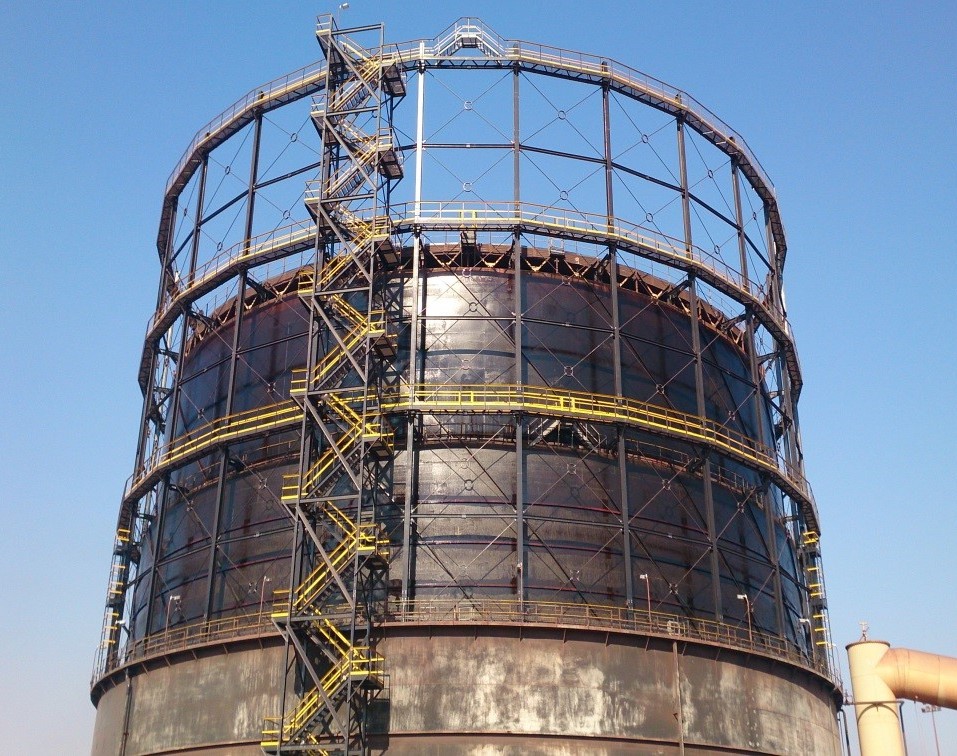
Constructed in the mid-1980s, this water-sealed gasholder was commissioned to regulate the pressure within the blast furnace gas distribution system.
As a result of the demanding process involved in collecting and distributing blast furnace gas the structural integrity of the gasholder had been affected.
The spiral guidance system of the gasholder was damaged and led to intermittent operation – ultimately only two of the three available lifts were functional due to structural damage. An alternative and costly energy supply was required to ensure the continued operation of the consumers of the blast furnace gas.
CWG was commissioned by our South African partner, Engineered Thermal Systems to undertake corresponding design activities, prepare detailed fabrication and construction drawings, provide technical support throughout the project and oversee the construction and testing phases of the gasholder conversion.
Sludge removal from the tank was required before work could get under way.
The main works included the installation of a new external guide frame comprising of equidistant columns fastened to the inside of the tank wall and secured with a series of steel rings and bracings.
Each of the three lifts is now guided up and down by guide rollers mounted at the top and bottom of each lift, pressing against the vertical columns as they rise and fall.
A new external tower staircase was erected to allow access to the tank and lift access walkways mounted from the new guide framework.
b) Deadline – Commissioning of the gasholder was to be achieved within 13 months of contract signature.
c) Safety – Working alongside Engineered Thermal Systems to ensure safety standards were met.
d) Results – The resulting converted gasholder was successfully completed in summer 2013 and has been running trouble free over its full working range since. This successful conversion highlights our versatility in market leading gasholder technology.
e) Benefits –
Improved reliability
Project cost savings by utilising existing lifts
Reduced conversion time over new build.
Klonne to Wiggins Type Dry Seal Gasholder Conversion in India
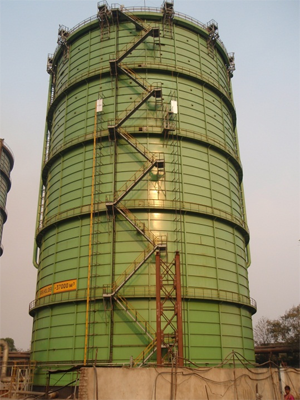 a. Challenge – To convert a redundant 50,000m³ Klonne gasholder into a fully functional 37,000m³ Wiggins type dry seal gasholder on an existing operational steel plant in India.
a. Challenge – To convert a redundant 50,000m³ Klonne gasholder into a fully functional 37,000m³ Wiggins type dry seal gasholder on an existing operational steel plant in India.
Clayton Walker Gasholders provided the technical knowledge and expertise for the removal of the existing damaged piston and all redundant equipment, and modification of the existing foundations and shell structure to accommodate the installation of a new piston structure along with all other associated equipment for the conversion.
CWG supplied key strategic components as well as part-time construction engineers to work with our partner in India to ensure the gasholder was manufactured, constructed and successfully converted.
b. Deadline – Commissioning of the gasholder was to be achieved within 13 months of contract signature.
c. Safety – CWG worked closely with our India partner to ensure compliance with client and local legislation.
d. Result – see photos below. This gasholder was our eight successful conversion demonstrating our world leadership in gasholder technology.
e. Benefits –
e.i. Improved and safer technology
e.ii. Project cost savings by utilising existing foundation, shell and roof structure
e.iii. Reduced operating and maintenance costs
e.iv. Consumable cost savings
e.v. 100% gas seal efficiency
e.vi. Reduced conversion time over new build
Clayton Walker Gasholders (CWG)
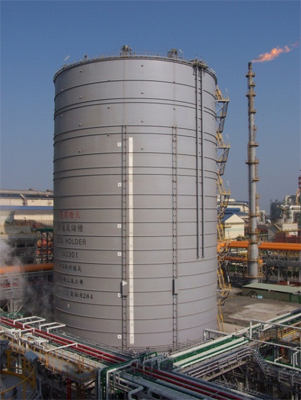 1. New Wiggins Type Dry Seal Gasholder on Coke Oven Gas in Taiwan
1. New Wiggins Type Dry Seal Gasholder on Coke Oven Gas in Taiwan
a. Challenge – to design and engineer a 30,000m³ Wiggins type dry seal gasholder operating on Coke Oven gas within a restricted area of an operational steel plant. The standard design having a shell diameter equal to the height was impractical to meet the client’s requirements and a space-saving 1:1.6 design ratio was adopted.
Clayton Walker Gasholders supplied key strategic components as well as full-time fabrication and construction engineers to ensure the gasholder was manufactured, constructed and commissioned successfully.
This gasholder was the first of its kind fitted with a synthetic rubber seal specially developed for Coke Oven gas.
b. Deadline – Basic engineering for the gasholder had to be provided within one month of contract signature to enable the client to proceed with design and construction of the foundation and detail engineering had to be complete within six months to enable a local fabrication and construction company to be selected. Strategic supplies from the UK, including specialist “tank-jacking” equipment had to be supplied progressively to suit the overall start to finish programme of 24 months.
c. Safety – The gasholder had to be designed and engineered to suit the rigorous seismic conditions found in this part of the world.
d. Result – Project was completed on programme and to the complete satisfaction of the client; see photographs below.
e. Benefits – By adopting the Wiggins type dry seal gasholder over alternative and more conventional gasholders for the Coke Oven gas process, the benefits to the client were:
e.i. Constant operating pressure
e.ii. Higher operational piston speeds
e.iii. Considerably reduced operating and maintenance costs
e.iv. Reduced build costs
e.v. Operator friendly
e.vi. Reduced environmental issues and hazardous waste
e.vii. High availability / reduced downtime
Worldwide experience

Projects in... Europe, Middle East, Far East, Africa, Canada, North America, South America, Australasia.



